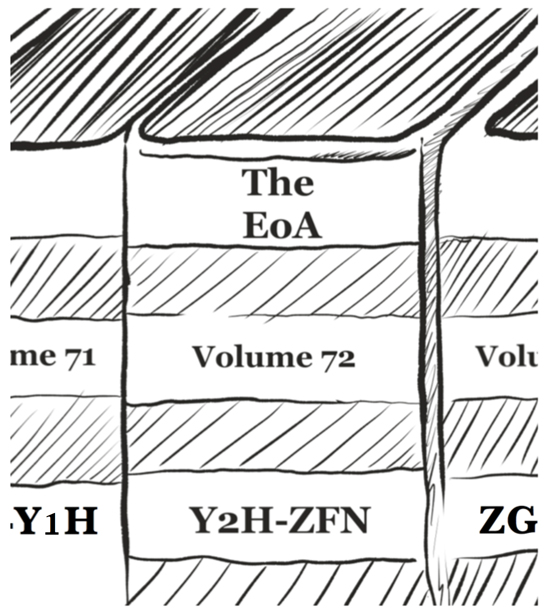 I’m a total sucker for new methods. I couldn’t wait to try out Trans-Helical Illumination (THI), in which low intensity lasers prime conversion of helical proteins. The potential of Synthetically Integrative Sensor Neurons (SISN) to probe brain subregion function is inspiring. Closer to my own heart, we have high hopes that Optical Wavelength Assembly of Yeast Tetrads (OWAYT) will solve a persistent roadblock with this wonderful fungus. In a similar vein, my mass spec buddies have been raving about how On-gel Exchange of Cross-linked Proteins (OEXP) should get around one of their longstanding problems.
I’m a total sucker for new methods. I couldn’t wait to try out Trans-Helical Illumination (THI), in which low intensity lasers prime conversion of helical proteins. The potential of Synthetically Integrative Sensor Neurons (SISN) to probe brain subregion function is inspiring. Closer to my own heart, we have high hopes that Optical Wavelength Assembly of Yeast Tetrads (OWAYT) will solve a persistent roadblock with this wonderful fungus. In a similar vein, my mass spec buddies have been raving about how On-gel Exchange of Cross-linked Proteins (OEXP) should get around one of their longstanding problems.
The genetics of differentiation will surely never be the same now that Loci Association in Nascent Stem Cells (LAINSC) has been developed. Some of our most complex data make sense only after we apply the Interconnected and Extended Networks (IEN) algorithm. Finally, even the hottest of fields is being revolutionized by Cluster-independent Editing (CE). And all this, just in the last month.

I got so jazzed by these new approaches that the lab planned out a few experiments to capitalize on all of them at once. Although LAINSC didn’t give us the resolution we had hoped for, we could correct its errors using CE with IEN analysis. But when we applied THI in tandem with OEXP to SISN, the data were unfortunately just gobbledygook. And we never did get OWAYT to work as advertised.
When I glanced at my online notebook page detailing our efforts with these methods, I was stunned to reread my subject line where I had typed their names all in a row: THI SISN OWAYT OEXP LAINSC IEN CE.
You may not be too surprised to learn that I detest acronyms, especially acronyms for methods. It usually takes reading only to the second paragraph—where a novel acronym first gets used without its long-winded original name—to get me totally lost, because I don’t have a prayer of remembering what the acronym stands for.
Creative acronymologists must surely believe that we keep their strained collection of juxtaposed terms (or, as we call it, their SCJT—pronounced “skajit”) ever present in our minds. Fat chance. They might do better to call their methods John, Paul, George and Ringo—the members of a rock group known popularly in the 1960s and 1970s as The JoPaGeRis (pronounced “joe-pah-jerries”)—for all that their acronyms resonate with most biologists.
Consider one of the most famous methods in molecular biology, published by Fred Sanger and colleagues in 1977 in the Proc. Natl. Acad. Sci. U.S.A. Sanger refers throughout this paper to “the method” or “the current method” or a “new method” but never christens it with a name more catchy than the “inhibitor method.”
In time, the technique came to be called “dideoxy sequencing” or “Sanger sequencing” (but never—whew!—as di-seq or Sang-seq). Dideoxy sequencing—a name good enough for the method that won a second Nobel Prize for Sanger—should serve as the quintessence of naming. It is brief, descriptive and utterly characteristic; no one confuses the term with any other method, fails to appreciate how the method works, or forgets the words behind some bizarre and cute acronym that bears little connection to the original name.
My plea to methods developers and anyone else who comes up with a hitherto unnamed technology, macromolecule, database, cell, theory, or any other object is simple. Unless you can guarantee that your new object will become as well known as PCR, spare us the acronym and provide instead a short name that captures its essential qualities. If that doesn’t work, go with Ringo.












